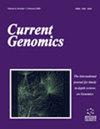Epigenetic Diversity Underlying Seasonal and Annual Variations in Brown Planthopper (BPH) Populations as Revealed by Methylationsensitive Restriction Assay
IF 1.4
4区 生物学
Q4 BIOCHEMISTRY & MOLECULAR BIOLOGY
引用次数: 0
Abstract
Background:: The brown planthopper (BPH) is a monophagous sap-sucking insect pest of rice that is responsible for massive yield loss. BPH populations, even when genetically homogenous, can display a vast range of phenotypes, and the development of effective pest-management strategies requires a good understanding of what generates this phenotypic variation. One potential source could be epigenetic differences. Methods:: With this premise, we explored epigenetic diversity, structure and differentiation in field populations of BPH collected across the rice-growing seasons over a period of two consecutive years. Using a modified methylation-sensitive restriction assay (MSRA) and CpG island amplification- representational difference analysis, site-specific cytosine methylation of five stress-responsive genes (CYP6AY1, CYP6ER1, Carboxylesterase, Endoglucanase, Tf2-transposon) was estimated, for identifying methylation-based epiallelic markers and epigenetic variation across BPH populations. Results:: Using a cost-effective and rapid protocol, our study, for the first time, revealed the epigenetic component of phenotypic variations in the wild populations of BPH. Besides, results showed that morphologically indistinguishable populations of BPH can be epigenetically distinct. Conclusion:: Screening field-collected BPH populations revealed the presence of previously unreported epigenetic polymorphisms and provided a platform for future studies aimed at investigating their significance for BPH. Furthermore, these findings can form the basis for understanding the contribution(s) of DNA methylation in providing phenotypic plasticity to BPH.甲基化敏感限制分析揭示的褐跳蚤(BPH)种群季节性和年度性变化背后的表观遗传多样性
背景::褐飞虱(BPH)是水稻的一种单食性吸汁害虫,是造成大量减产的原因。即使在基因同源的情况下,褐飞虱种群也会表现出各种各样的表型,要想制定有效的害虫管理策略,就必须充分了解是什么导致了这种表型变异。表观遗传差异可能是其中一个潜在来源。方法::在此前提下,我们探索了连续两年在水稻生长季节收集的 BPH 田间种群的表观遗传多样性、结构和分化。利用改良的甲基化敏感限制分析法(MSRA)和CpG岛扩增-代表性差异分析法,估算了五个应激反应基因(CYP6AY1、CYP6ER1、羧酸酯酶、内切葡聚糖酶、Tf2-转座子)的特异性胞嘧啶甲基化位点,以确定基于甲基化的外显子标记和BPH种群间的表观遗传变异。结果我们的研究采用了一种经济有效的快速方法,首次揭示了 BPH 野生种群表型变异的表观遗传因素。此外,研究结果表明,在形态上难以区分的 BPH 种群在表观遗传学上可能是不同的。结论筛选野外采集的牛肝菌种群发现了以前未报道过的表观遗传多态性,为今后研究这些多态性对牛肝菌的意义提供了一个平台。此外,这些发现可为了解 DNA 甲基化在提供良性前列腺增生症表型可塑性方面的作用奠定基础。
本文章由计算机程序翻译,如有差异,请以英文原文为准。
求助全文
约1分钟内获得全文
求助全文
来源期刊

Current Genomics
生物-生化与分子生物学
CiteScore
5.20
自引率
0.00%
发文量
29
审稿时长
>0 weeks
期刊介绍:
Current Genomics is a peer-reviewed journal that provides essential reading about the latest and most important developments in genome science and related fields of research. Systems biology, systems modeling, machine learning, network inference, bioinformatics, computational biology, epigenetics, single cell genomics, extracellular vesicles, quantitative biology, and synthetic biology for the study of evolution, development, maintenance, aging and that of human health, human diseases, clinical genomics and precision medicine are topics of particular interest. The journal covers plant genomics. The journal will not consider articles dealing with breeding and livestock.
Current Genomics publishes three types of articles including:
i) Research papers from internationally-recognized experts reporting on new and original data generated at the genome scale level. Position papers dealing with new or challenging methodological approaches, whether experimental or mathematical, are greatly welcome in this section.
ii) Authoritative and comprehensive full-length or mini reviews from widely recognized experts, covering the latest developments in genome science and related fields of research such as systems biology, statistics and machine learning, quantitative biology, and precision medicine. Proposals for mini-hot topics (2-3 review papers) and full hot topics (6-8 review papers) guest edited by internationally-recognized experts are welcome in this section. Hot topic proposals should not contain original data and they should contain articles originating from at least 2 different countries.
iii) Opinion papers from internationally recognized experts addressing contemporary questions and issues in the field of genome science and systems biology and basic and clinical research practices.
 求助内容:
求助内容: 应助结果提醒方式:
应助结果提醒方式:


